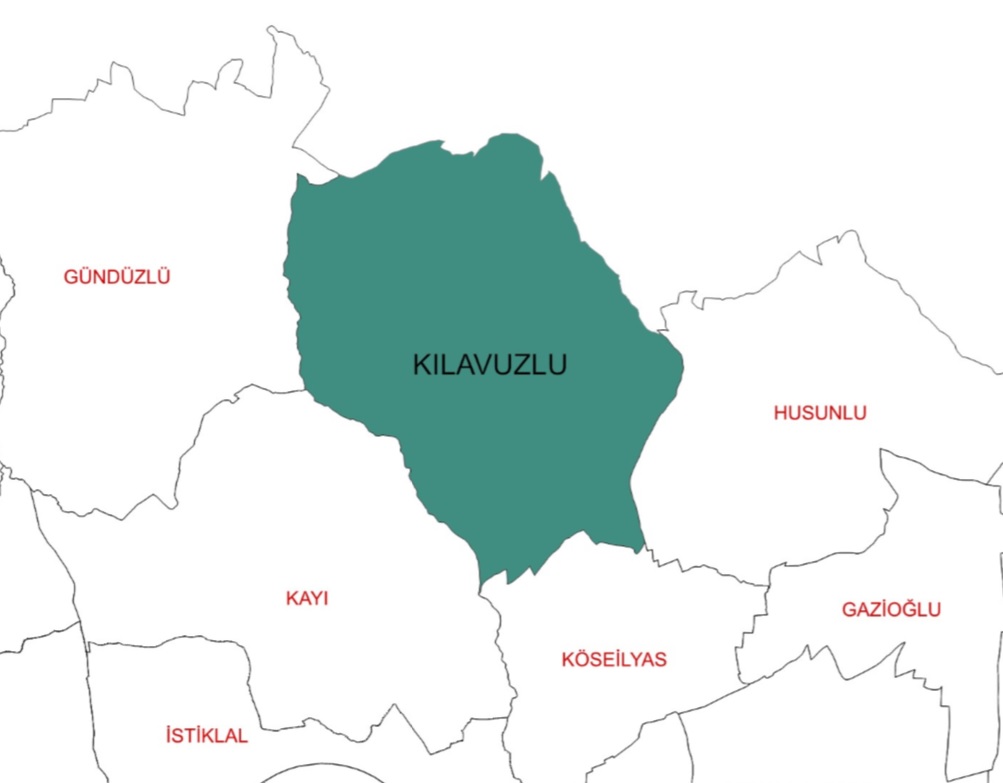

The founder of the Kilavuzlu Village and the initiator of its establishment is Abdal Ahmet Baba, son of Emir Ali, from the Yenişar Village of the Old Zağra province of Bulgaria. All of the founders of the village are members of the Amuca Tribe. Those who came to the Kilavuzlu village with Abdal Ahmet Baba first came to the Camci Simon farm, son of Gelgel, in 1877, near Cesme in Ferhat Aga, built by Yasar Aykut. There are shares of Camcı Simon, Ferhat Ağa and Doğanca farms in the current land of the village. Today, Ali Rıza's son Senayi Bey from the neighboring Kayı Village donated the plain inside the residential area of the Kilavuzlu Village. He also recorded this in the land registry records. On the 1530 Ottoman archive Vize Livası map, Kaba Kulağuz village, which does not exist today within the land of Kilavuzlu Village of Tekirdag, is still within the borders of Kilavuzlu Village, in the Yukari Cinar locality, in a location known as one of the old mansions among the people. Kilavuzlu Village continues its customs according to the Bektashi way. It is named after Abdal Ahmet Baba, who founded the only open Bektashi dervish lodge in Thrace, excluding Istanbul. Bektashis of the Amuca Tribe and other Babagân branch Bektashis are spiritually attached to this place. Abdal Ahmet Baba and his relatives came from Yenişar Village of Kazanlık (Kızanlık) town in Bulgaria. This village is known as Yenişar in the old Ottoman records and still among the people. Those who returned to their Balkan villages were among these people. Later, there were also people from Dikence, Bokluca, Köseler and Belören in Bulgaria. Villages called Balkan Villages are villages in Kofçaz region beyond Kırklareli.
The last people who came to the village from Ahlatlı village are of Belören origin. It is thought that there are more than 20 settlements and yurts within the borders of Kilavuzlu village. The fact that the land of the village is on the old coal miner road has drawn the attention of passers-by for years. The existence of tile quarries and a linseed oil business before the village was established confirms this claim.
Tekirdağ central district is 11 km from Süleymanpaşa.
The economy of the village is based on agriculture and animal husbandry.
Agriculture, in particular, is the basis of the village's economy. Vegetables and fruits that can be grown in the Marmara and continental climates are grown in the fields where irrigation cannot be applied. Sunflower, which is one of the main products of the Marmara climate, is very common. In addition, other crops such as onions, potatoes, wheat, shallots, watermelons, zucchini, eggplants, grapes and peppers are also grown.
Livestock, on the other hand, has lost its former importance, especially in recent years. More poultry farming is common. In addition to this, small cattle and cattle breeding are also seen, but it cannot be said that it is very common.
There is a primary school in the village, but besides it cannot be used, transported education is used. It was previously used as a school. However, improving communication and transportation conditions and the proximity of Tekirdağ center to the village caused the school to lose its importance. Now students continue their education in primary and secondary schools in Tekirdağ. The village has a drinking water network for many years. In addition, the village people can also benefit from the wells and village fountains they have drilled. There is no water problem in the village. There is no PTT branch or PTT agency. There is no health centers and health posts. Due to its proximity to Tekirdağ, such needs can be met from the center. The village has an asphalt road, and electricity and fixed telephone have existed in the village for years. In addition, GSM operators are also involved in meeting the communication needs.
The population in 2019 was 152 people.